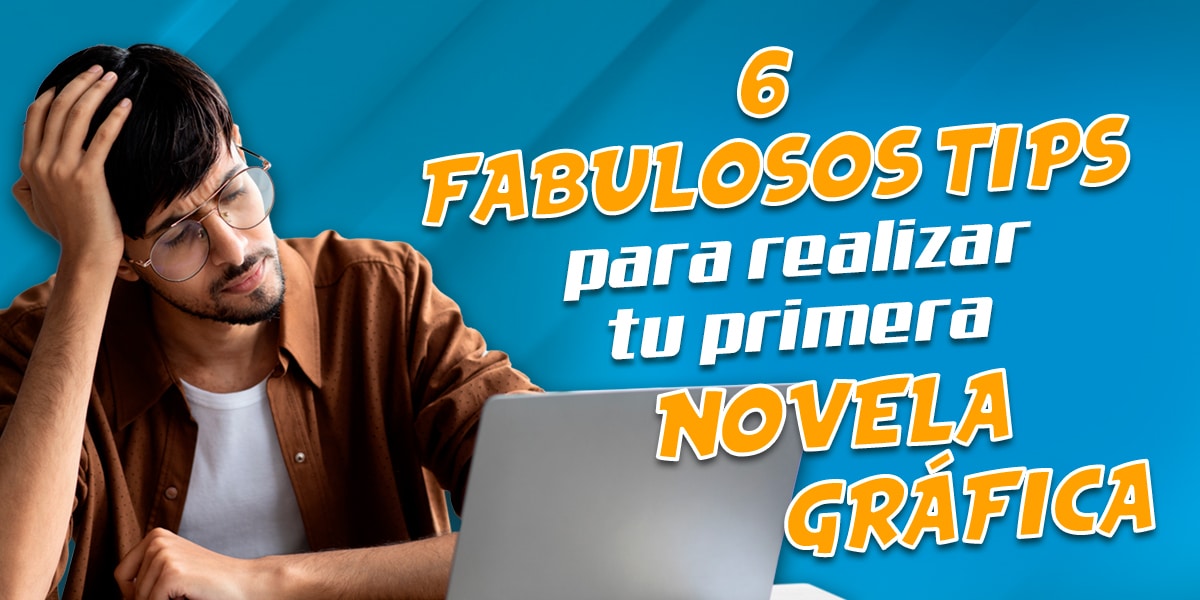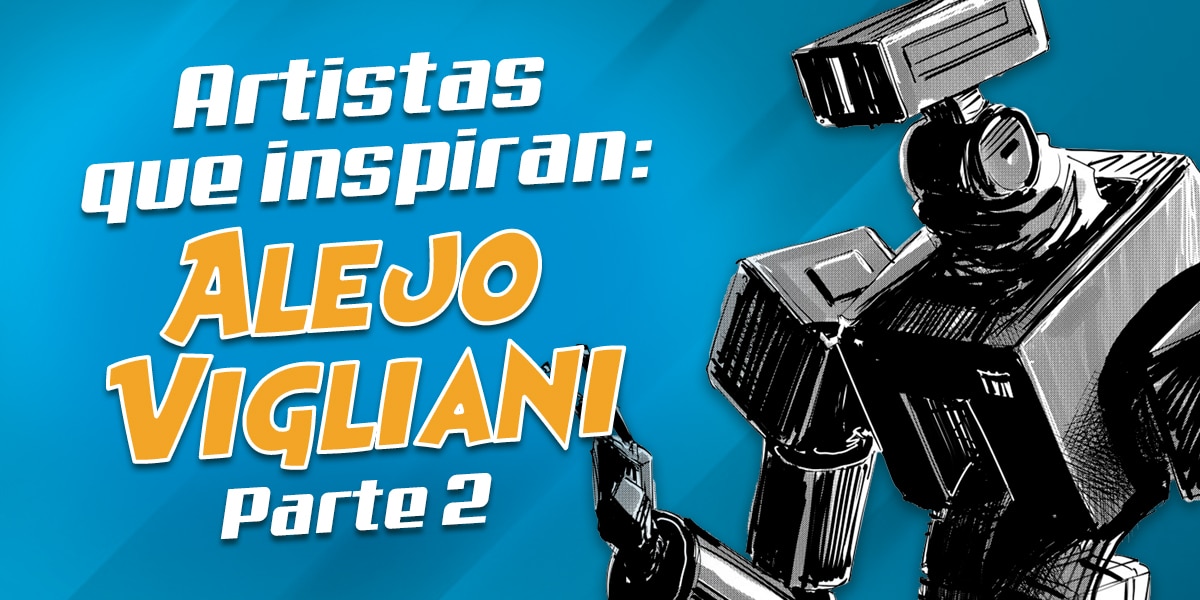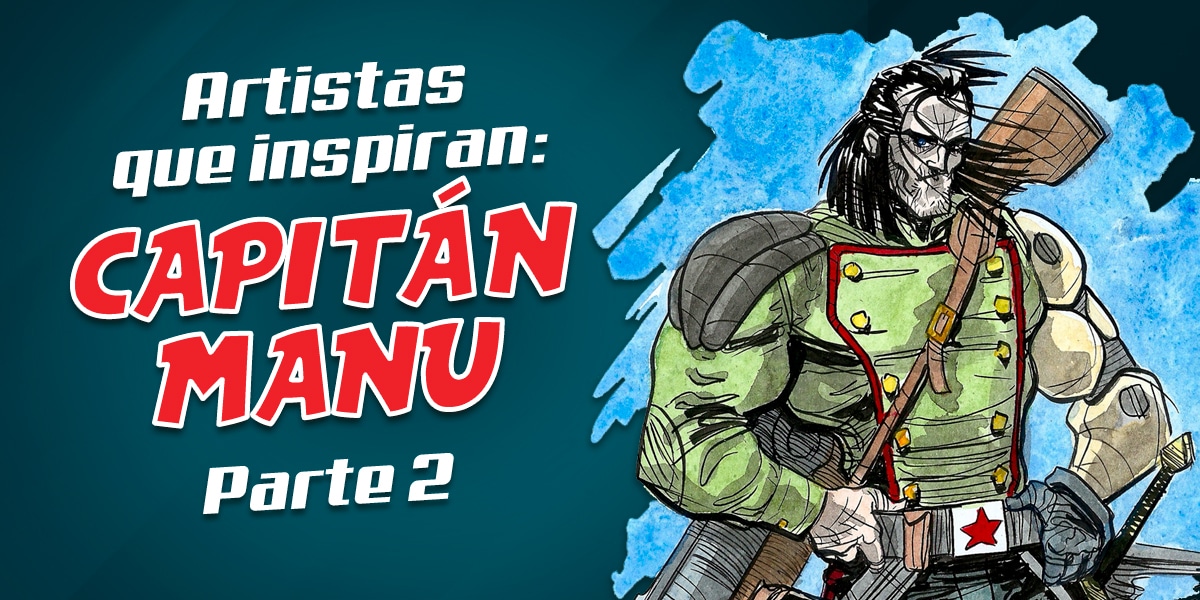6 tips para no abrumarte realizando tu primera novela gráfica
¿Alguna vez has soñado con crear tu propia novela gráfica pero te has sentido abrumado por el desafío? No estás solo. Muchos artistas talentosos se encuentran paralizados ante la idea de embarcarse en un proyecto tan ambicioso. Pero no temas, porque estás a punto de descubrir los secretos para hacer realidad tu sueño sin perder la cabeza en el proceso.
En este artículo, te revelaremos 6 consejos invaluables para navegar con éxito por las aguas de tu primera novela gráfica. Desde técnicas de organización hasta trucos para mantener la motivación, estos tips te ayudarán a superar los obstáculos y dar vida a tu historia visual. ¿Estás listo para transformar tu visión en una obra maestra de páginas y paneles? ¡Sigue leyendo y prepárate para embarcarte en la aventura creativa de tu vida!
Por Chuky Rossi
Domina el arte de la novela gráfica: 6 consejos imprescindibles para principiantes
Crear una novela gráfica es como emprender un viaje épico. Requiere planificación, perseverancia y una buena dosis de creatividad. Pero no te preocupes, no tendrás que enfrentarte a este desafío solo. Hemos consultado a un experto en la materia para brindarte las mejores estrategias y así convertir tu sueño en realidad.
Fabricio Salvatore, un reconocido autor de cómics, ha compartido en exclusiva para TFC sus secretos mejor guardados para enfrentarse al desafiante camino de crear una novela gráfica por primera vez. Prepárate para sumergirte en el fascinante mundo del cómic con estos valiosos consejos:
1. Abraza la productividad: el poder del “ahora”
El primer consejo de Fabricio es tan simple como poderoso: “No dejes para mañana lo que puedes hacer hoy”. Este mantra de productividad se ha convertido en la columna vertebral de su proceso creativo. “Mi filosofía es hacer todo el trabajo posible hoy, para dejarle la menor cantidad de trabajo posible al Fabri de mañana”, explica.
Esta mentalidad se traduce en un enfoque meticuloso en cada etapa del proceso de creación de una novela gráfica:
- La idea: Desarrolla tu concepto a fondo antes de avanzar.
- El guion: Dedica tiempo a pulir cada detalle de tu historia.
- La ejecución: Planifica cuidadosamente cómo llevarás tu guion a la vida visual.
- La edición: Prepárate para refinar tu trabajo con ojo crítico.
Fabricio enfatiza la importancia de un guion bien trabajado: “Intento que el guion esté lo más desarrollado posible, para que el dibujo fluya de manera casi mecánica”. Este enfoque no solo mejora la calidad del resultado final, sino que también simplifica el proceso de edición.
Para estructurar su guion, Fabricio adopta un formato inspirado en los guiones cinematográficos, adaptándolo a las necesidades específicas del cómic. Una de sus innovaciones es la inclusión de líneas de separación en el guion que indican cambios de página, asegurando que la información se distribuya de manera efectiva en el espacio limitado de dos páginas enfrentadas.
Además, Fabricio aplica una “regla de oro” en la narración visual: “Toda la atención narrativa tiene que estar en la esquina donde cambias la página, para que el lector tenga ganas justamente de hacer eso”. Esta técnica mantiene al lector enganchado y ansioso por descubrir qué sucederá a continuación.
Al trabajar meticulosamente en cada etapa, Fabricio minimiza los ajustes necesarios en fases posteriores. Solo se vio obligado a realizar pequeñas modificaciones, como ajustar la extensión de algunos diálogos para que encajaran perfectamente en los globos de texto.
¿Quieres llevar tu productividad al siguiente nivel? Descubre aquí cómo optimizar tu flujo de trabajo creativo y hacer que cada minuto cuente en la creación de tu novela gráfica.
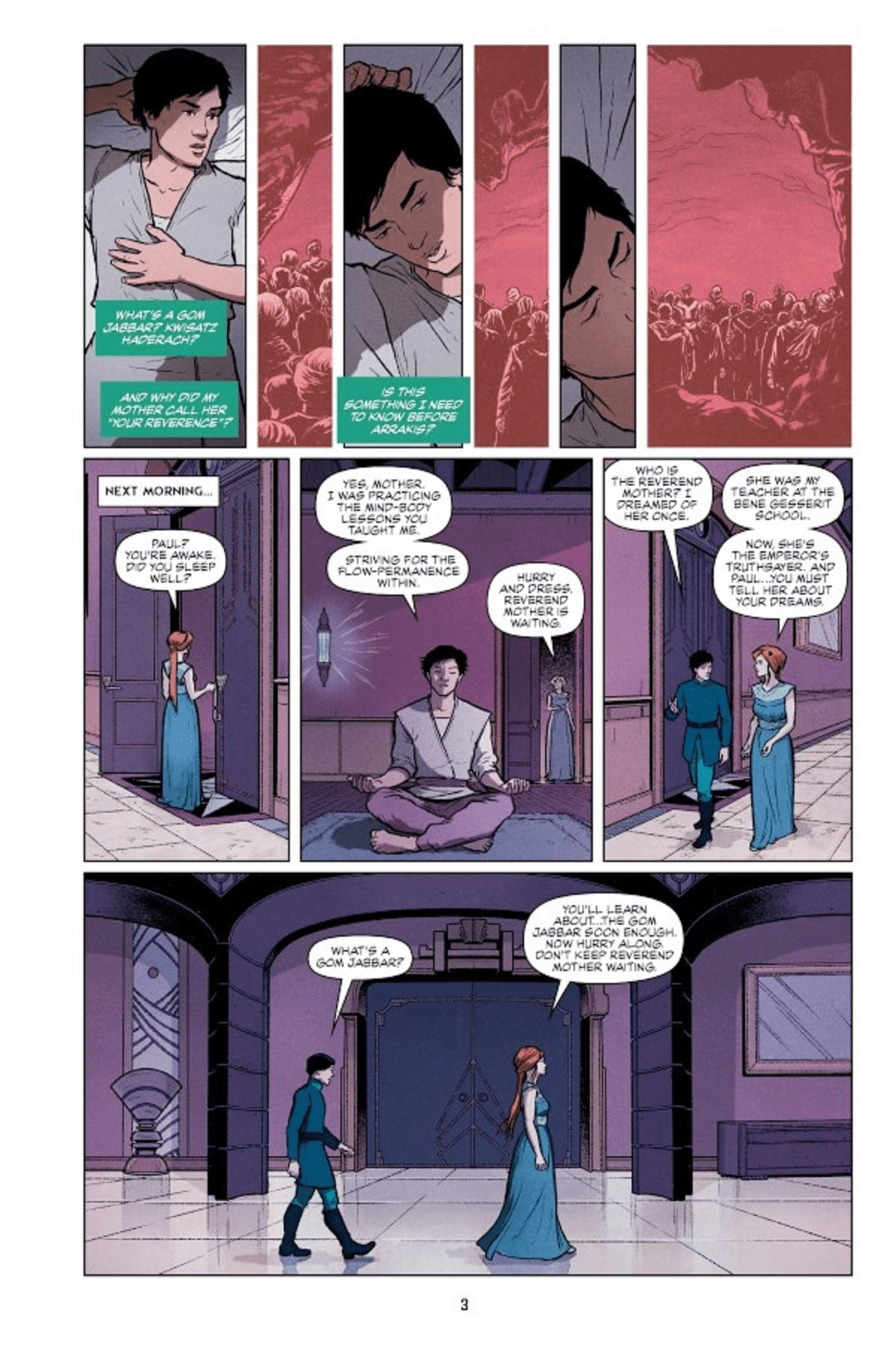
2. El poder de la comunidad: rodéate de inspiración
Contrario a la creencia popular de que el arte del cómic es una tarea solitaria, Fabricio propone un enfoque revolucionario: “Prepárate para buscar rodearte de gente que esté en la misma situación que tú”. Este consejo, que él denomina “anti-Alan Moore”, desafía la noción de que los historietistas deben trabajar en aislamiento.
La razón detrás de este consejo es simple pero poderosa: tus compañeros artistas se convertirán en tus mejores aliados. Ellos serán:
- Tus editores más sinceros
- Tus críticos más constructivos
- Tus consejeros más valiosos
Fabricio enfatiza que este enfoque no se trata de buscar fama o conexiones superficiales. Se trata de crear una red de apoyo genuina que te ayudará a crecer como artista y a perfeccionar tu obra. “La historieta es algo que tú dibujas, pero que la compartes en una comunidad”, afirma.
Esta perspectiva comunitaria no solo enriquece tu proceso creativo, sino que también te prepara para el aspecto social inherente al mundo del cómic. Recuerda, las convenciones, los eventos de firmas y las presentaciones son parte integral de la vida de un autor de novelas gráficas.
Además, rodearte de otros creadores puede proporcionarte:
- Motivación constante
- Nuevas perspectivas e ideas
- Oportunidades de colaboración
- Un sentido de pertenencia en la comunidad artística
¿Listo para conectar con otros artistas y elevar tu arte? Haz clic aquí para descubrir cómo ampliar tu red creativa y encontrar la inspiración que necesitas para tu próxima gran obra.
3. Encuentra tu historia: el poder de la adaptación
Si te encuentras atrapado en la temida “página en blanco”, Fabricio tiene un consejo brillante: comienza adaptando una historia real. Este enfoque no solo te proporciona un punto de partida sólido, sino que también te permite concentrarte en desarrollar tus habilidades narrativas visuales sin la presión adicional de crear una trama desde cero.
Fabricio comparte su propia experiencia: “Hice lo más fácil que podía hacer: tomar una historia que ya existe”. En su caso, se inspiró en la fascinante historia de Kaspar Hauser, un enigmático personaje del siglo XIX que ya había sido objeto de una película y un libro, pero nunca de un cómic.
Las ventajas de adaptar una historia existente son numerosas:
- Tienes una estructura narrativa predefinida para trabajar
- Puedes concentrarte en cómo contar la historia visualmente
- Reduces la ansiedad de crear algo completamente original
- Aprendes a interpretar y transformar material existente
Sin embargo, adaptar no significa simplemente copiar. Tu tarea es aportar tu visión única y tu estilo personal a la historia. Algunas formas de hacer esto incluyen:
- Cambiar el punto de vista desde el que se cuenta la historia
- Actualizar el contexto a un escenario más contemporáneo
- Explorar aspectos de la historia que no se han profundizado antes
- Combinar elementos de diferentes fuentes para crear algo nuevo
Recuerda, grandes obras de la literatura y el cine han surgido de adaptaciones creativas. Tu interpretación podría ser la próxima gran sorpresa en el mundo del cómic.
¿Estás listo para dar el primer paso en tu viaje creativo? Explora aquí cómo transformar historias existentes en impactantes novelas gráficas y descubre tu voz única como narrador visual.
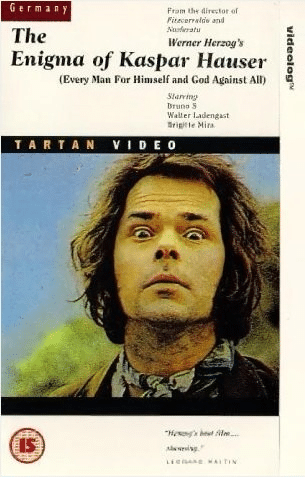
4. Establece metas realistas: el camino hacia el éxito
Uno de los consejos más valiosos de Fabricio es la importancia de establecer metas claras y alcanzables. Este enfoque no solo te ayuda a mantener un ritmo constante de producción, sino que también te proporciona una sensación de logro regular que alimenta tu motivación.
Fabricio comparte su propia estrategia: “Mi ritmo personal, al dibujar Kaspar Hauser, fue de una página por semana”. Este objetivo, aparentemente modesto, resulta ser una fórmula poderosa para el éxito a largo plazo.
¿Por qué funciona este enfoque?
- Es realista y alcanzable, independientemente de tu nivel de habilidad
- Proporciona una estructura clara a tu proceso creativo
- Te permite ver progreso tangible semana a semana
- Evita el agotamiento y la frustración asociados con metas demasiado ambiciosas
Fabricio enfatiza que este ritmo es “algo que cualquier persona en general podría hacer” y lo describe como “un ritmo sano que ayuda a no volverse loco en el intento”. La clave está en la consistencia y el compromiso con tu meta semanal.
Este método también fomenta la responsabilidad personal. Como dice Fabricio, “uno es su peor enemigo. Si uno no hizo el cómic, es por su propia responsabilidad”. Esta mentalidad te empodera para tomar el control de tu proyecto y tu progreso.
Algunos consejos para establecer y mantener tus metas:
- Sé realista: comienza con objetivos pequeños y auméntalos gradualmente
- Sé específico: “una página por semana” es más efectivo que “trabajar en el cómic regularmente”
- Sé flexible: ajusta tus metas si es necesario, pero mantén el compromiso
- Celebra tus logros: reconoce y premia tu progreso, por pequeño que sea
Recuerda, la clave está en la constancia. Como sugiere Fabricio, incluso si tienes compromisos sociales, siempre puedes encontrar formas creativas de cumplir con tu meta: “Si te invitan a una fiesta, puedes ir a la fiesta y no dibujar el cómic, o puedes no ir y dibujarlo, o asistir a la fiesta y dibujar el cómic allí”.
¿Listo para establecer tus propias metas y ver cómo tu novela gráfica cobra vida? Ingresa aquí para descubrir herramientas que te ayudarán a mantener tu ritmo creativo y alcanzar tus objetivos semana tras semana.
5. Domina el arte del calco: una herramienta, no un atajo
Uno de los consejos más controvertidos pero potencialmente liberadores de Fabricio es el uso estratégico del calco. Este tip es especialmente valioso para aquellos que se sienten intimidados por ciertos aspectos técnicos del dibujo o que buscan mantener un estilo consistente a lo largo de su novela gráfica.
Fabricio desafía la noción de que el calco es una forma de “hacer trampa”: “Hay una concepción sobre que los caminos fáciles están mal vistos, porque para que todo tenga valor artístico te debería costar mucho trabajo. Déjame decirte que esto es erróneo: Da Vinci calcaba, Miguel Ángel calcaba, muchas personas que en el inconsciente colectivo son grandes genios del arte, calcaban”.
Sin embargo, es crucial entender que el calco es una herramienta, no una solución universal. Fabricio advierte: “Calcar es también una técnica que hay que usar a conciencia. Si hay algo específico de la composición que te cuesta, esa parte puede ir calcada. Pero si calcas toda una página, panel por panel, puede notarse mucho y arruinar tu cómic”.
Aquí tienes algunas pautas para usar el calco de manera efectiva:
- Úsalo para elementos específicos que te resultan desafiantes, no para páginas enteras
- Utilízalo como una herramienta de aprendizaje para entender mejor las proporciones y la anatomía
- Combínalo con tu propio estilo para mantener la autenticidad de tu obra
- Practica regularmente el dibujo a mano alzada para mejorar tus habilidades generales
El calco puede ser especialmente útil en situaciones como:
- Mantener la consistencia en la apariencia de personajes recurrentes
- Recrear fondos o escenarios complejos con precisión
- Capturar poses o expresiones difíciles de dibujar de memoria
- Ahorrar tiempo en elementos repetitivos o muy detallados
Recuerda, el objetivo final es crear una obra visualmente atractiva y coherente. El calco, usado juiciosamente, puede ser unaherramienta valiosa para lograr este objetivo.
¿Quieres perfeccionar tus habilidades de dibujo y aprender cuándo y cómo usar el calco de manera efectiva? Descubre aquí técnicas avanzadas para elevar tu arte secuencial y crear páginas que cautiven a tus lectores.
6. La sinceridad como brújula: conoce tus límites y supéralos
El último consejo de Fabricio es quizás el más profundo y transformador: sé sincero contigo mismo. Esta honestidad brutal no solo te ayudará a navegar los desafíos de crear tu primera novela gráfica, sino que también te permitirá superar tus propias expectativas.
Fabricio explica: “Mi secreto conmigo mismo es la sinceridad cruda. Saber hasta dónde puedes llegar y hasta dónde no, va a producir que estés menos frustrado con tu trabajo”.
Esta autoevaluación honesta tiene múltiples beneficios:
- Te ayuda a establecer expectativas realistas
- Reduce la frustración y el desánimo
- Te permite concentrarte en mejorar tus puntos débiles
- Fomenta un crecimiento constante y sostenible como artista
Fabricio comparte su propia experiencia: “Hice mi primera novela gráfica, sabiendo con una sinceridad cruda, más o menos hasta dónde iba a llegar, cuánta gente la iba a leer y cuántos a comprarla”. Sorprendentemente, este enfoque realista lo llevó a superar sus propias expectativas, llegando incluso a recibir galardones por su obra.
Para aplicar este principio en tu propio proceso creativo:
- Evalúa honestamente tus habilidades actuales
- Identifica áreas específicas para mejorar
- Establece metas realistas pero desafiantes
- Celebra tus logros, por pequeños que sean
- Mantén una mentalidad de crecimiento y aprendizaje continuo
Recuerda, la sinceridad contigo mismo no significa limitarte, sino conocerte para poder superarte. Como demuestra la experiencia de Fabricio, esta actitud puede llevarte más lejos de lo que imaginas.
¿Estás listo para embarcarte en tu viaje de autoconocimiento y crecimiento artístico? Haz clic aquí para explorar herramientas que te ayudarán a evaluar y mejorar tus habilidades, llevando tu arte del cómic al siguiente nivel.
Conclusión: Tu camino hacia la excelencia en la novela gráfica
Crear tu primera novela gráfica es un viaje emocionante y desafiante. Puede parecer abrumador al principio, pero con los consejos de Fabricio Salvatore, ahora tienes un mapa para navegar este terreno creativo con confianza y éxito.
Recapitulemos los puntos clave que hemos explorado:
- Abraza la productividad y trabaja diligentemente en cada etapa del proceso.
- Rodéate de una comunidad de artistas que te apoyen y te inspiren.
- No temas adaptar historias existentes como punto de partida.
- Establece metas realistas y mantén un ritmo constante de trabajo.
- Utiliza el calco como una herramienta estratégica, no como una muleta.
- Sé sincero contigo mismo sobre tus habilidades y aspiraciones.
Recuerda, cada artista tiene su propio camino único. Estos consejos son una guía, pero la verdadera magia ocurre cuando los adaptas a tu propio estilo y proceso creativo. No temas experimentar, cometer errores y aprender de ellos. Cada página que dibujes te acercará más a tu meta de completar tu primera novela gráfica.
La clave está en mantenerte persistente, paciente y apasionado. Con dedicación y práctica constante, verás cómo tu visión cobra vida página tras página. Y quién sabe, tal vez tu obra no solo supere tus expectativas, sino que también inspire a otros artistas en ciernes a dar el salto y crear sus propias historias visuales.
¿Estás listo para comenzar esta emocionante aventura? No esperes más. Toma tu lápiz, abre tu cuaderno de bocetos y da el primer paso hacia la creación de tu obra maestra. El mundo está esperando para ver tu historia única contada a través del poderoso medio de la novela gráfica.
Y recuerda, si alguna vez te sientes abrumado o necesitas inspiración adicional, visita nuestra plataforma para acceder a recursos que impulsarán tu creatividad y te mantendrán motivado en cada etapa de tu viaje artístico. ¡El mundo del cómic te espera!

